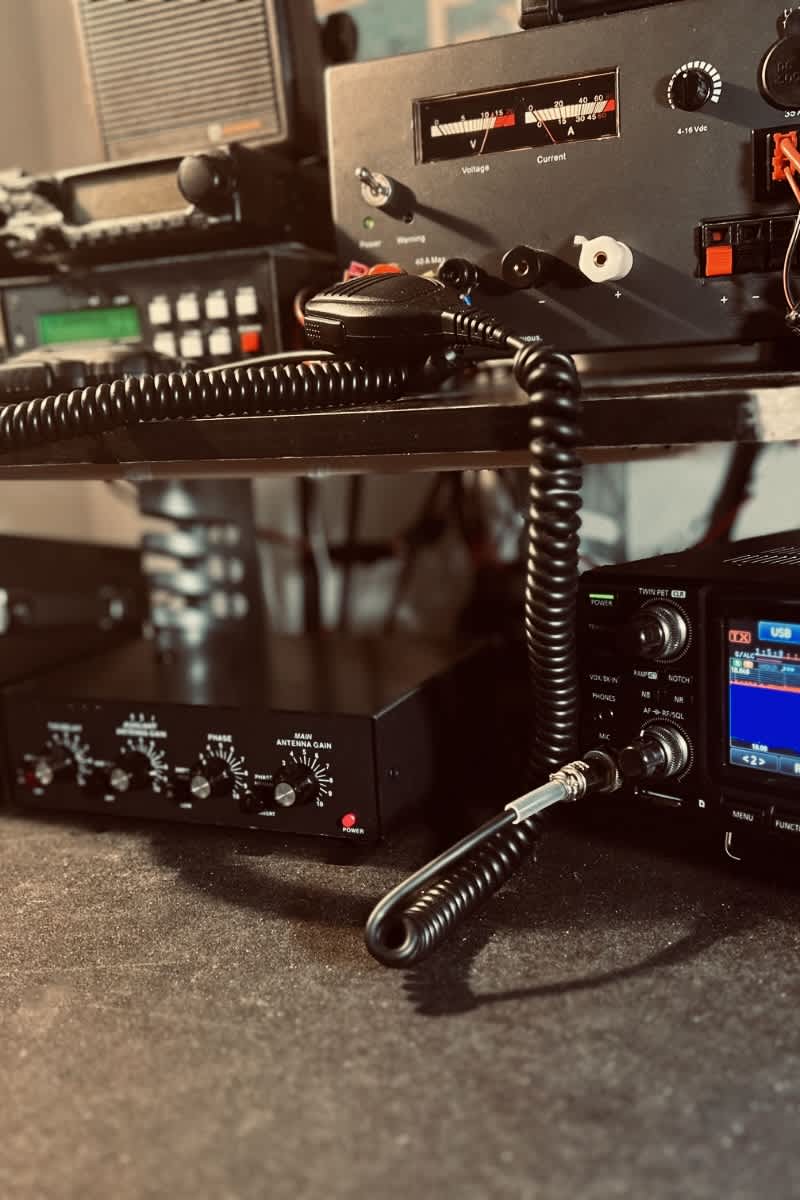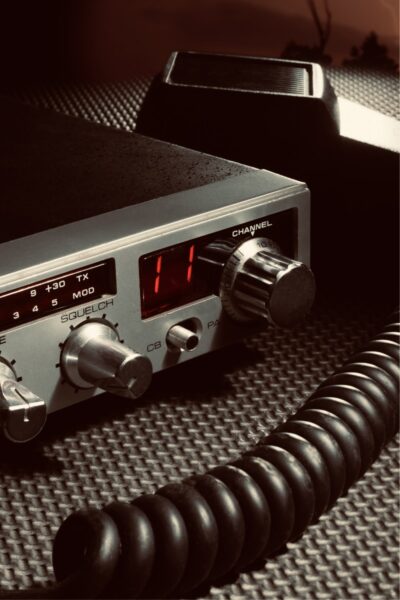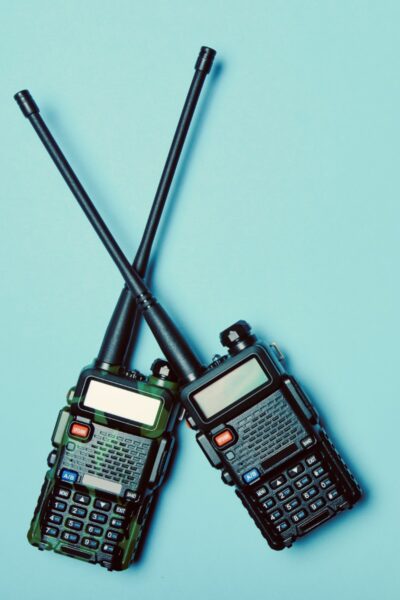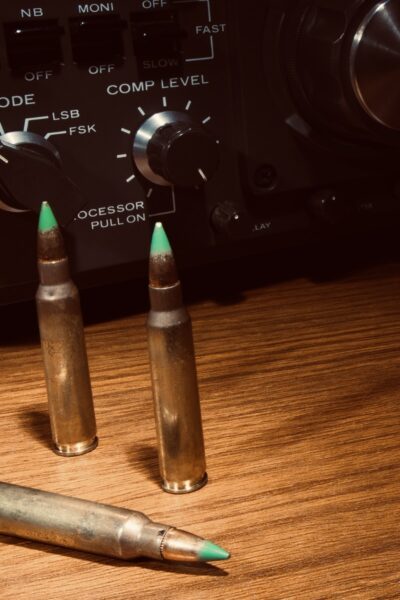Off-grid communications: Part 1
Taylor Hutchinson 03.14.24

Last month, many Americans woke up to an unexpected problem. No cell service. No text messages, phone calls, or data from cell towers. In some cases, this meant zero communication with the outside world, especially if the ISP that provided internet also serviced all the cell phones in the home. In the modern day to day, the way the world communicates with one other is a bundle of eggs in one basket. The internet. News, text, voice, and video communication are generally serviced through an Internet Service Provider. As consumers, this is a convenient one-stop shop for all things communications-related. However, staying connected when the lights go out and disaster strikes presents an inherent concern. Not being able to contact loved ones, receive up-to-date news, or have general situational awareness is frightening. Having alternate, contingent, and emergency plans for a grid-down scenario keeps the lines of communication open. Off-grid solutions provide a level of reliability and continuity that doesn’t depend on larger infrastructure outside a single individual’s or entity’s control. Most of these solutions are decentralized and not vulnerable to one single point of failure. While the solutions presented here are not comprehensive. It is meant to provide a primer to get started.
Short-Range Radios
Many readers are more than likely familiar with walkie-talkies or Ham Radio as a concept for emergency communication. Diving into the nuances is valuable due to the various available options and seeing how they fit into the needs of an emergency plan. Analog radios have various service options that have a low barrier to entry and in a pinch could work into a disaster comms plan. Radios built for the Family Radio Services (FRS) are the most common. These are the radios one can pick up on Amazon and operate on 22 channels in the Ultra High Frequency (UHF) bands 462 MHz-467 MHz range. They are free to use and require no license to transmit. What is gained in accessibility is lost in versatility. A fairly common theme when it comes to radios. They have a short operational range of only 2–5 miles with unobstructed conditions. Their antennas are generally fixed but have interfaces that are easy to operate. Limited in power and operating channels, an FRS radio is best used for peer-to-peer communications, and the information being transmitted is not sensitive. As we continue through the radio frequency spectrum, the power, and range of use will increase, but so do the barriers to entry.

A step up from FRS is MURS, or the Multi-Use Radio Service, which is a set of five VHF frequencies that are available for public use in the United States without the need for a license. The typical range of MURS radios is similar to that of FRS radios, typically around a few miles. MURS operates on 5 channels in the frequencies between 151.820 MHz to 154.600 MHz. The maximum legally permitted power output for MURS devices is 2 watts. Unlike FRS, which is mostly used for voice communication, MURS also allows for data transmissions, including text messages and GPS location data, which can be useful for specific applications.
Now we are venturing into licensed radio services. The General Mobile Radio Service (GMRS), is a licensed radio service provided by the Federal Communications Commission (FCC) in the United States. GMRS is designed for short-distance, two-way voice communications using handheld radios, mobile radios, and repeater systems. GMRS operates in the UHF band, like FRS, between 462 MHz and 467 MHz. However, it allows for higher power transmissions compared to FRS, with most handheld devices allowing up to 5 watts of power, and mobile units or base stations up to 50 watts on certain channels. This higher power contributes to a longer communication range. To obtain licensing from the FCC the process does not require an exam. However, there is a fee associated with obtaining the license. Thankfully, the license covers the individual licensee and their immediate family members for 10 years. GMRS shares the same channels as FRS, but the range of GMRS radios can vary significantly based on the power of the radio, the type of antenna used, and the environment. Under optimal conditions, direct communication between handheld radios might cover several miles. The use of repeaters, which are allowed in GMRS, can extend the range significantly, often enabling communications over tens of miles.

Purchasing radio gear to get started is akin to navigating a maze covered in fog. So many options when sourcing the right handhelds, mobile radios, or High Frequency (HF) radios that fit an individual or team’s needs. Hardware like digital radios can open even more options for security and privacy, like using encryption for licensed entities. There are dual-band radios to operate in the VHF and UHF bands. Unlike basic FRS or GRMS radios that are channelized; these radios require technical knowledge for pre-programming the channels. They are preferred due to their flexibility in various communication scenarios, especially in the realm of amateur radio. Now keep in mind, that transmitting on bands like FRS and GMRS with dual-band radios may be restricted due to FCC regulations. Radios must be certified by the FCC specifically for use on FRS or GMRS frequencies. This certification process ensures the radios meet specific technical standards, including power output, bandwidth, and other technical characteristics suitable for these operations. Caveat emptor applies when looking into various hardware in the radio sphere.
Long-Range Radio
Communication planning for an emergency requires forethought into what requirements are needed for one’s specific situation. Short-range radios may not cut it for certain scenarios. Requirements may entail listening to news and weather reports across the country or even texting family and friends. Thus, being able to tune in or transmit across the Ham Radio bands becomes a necessity. Ham radios, depending on the band, conditions, and equipment, their communications capability can range from local to global. Leveraging HF bands can allow for worldwide communication under the right conditions. This is a wide range of frequency bands, from HF to VHF and UHF, with power limits of up to 1,500 watts for some bands and modes. Ham Radio requires the most technical knowledge and involvement but also offers the most in terms of learning, community engagement, and the breadth of communication capabilities. There are different license levels (Technician, General, Extra), each granting different privileges.

The variation of communication HF opens up to operators is not limited to voice communications. Leveraging digital radios and an amateur radio license, operators can support a wide range of features such as text messaging, GPS tracking, emergency alerts, and data transmission. Accessing systems like Winlink and protocols such as Automatic Packet Reporting System (APRS) allow users the ability to transmit GPS data, text messages, download e-mails, and weather reports. Both Winlink and APRS exemplify the innovative use of amateur radio technology to provide reliable communication under a wide range of conditions. They serve critical roles in emergency communications, community service, and day-to-day communication for hobbyists and professionals alike.
Radio communications offer various options for one’s needs and scenarios. Diving in the pool of radio operations, one may never find the bottom. Learning the basics and starting small is the best way to avoid becoming overwhelmed. Understanding the tradeoffs, limitations, and compliance requirements for receiving and transmitting on the bands takes time and resources like any trade. The amateur radio community offers many resources to get started. All technology falls short without a community to support it. Engaging with each other keeps the lines open when disaster strikes.

